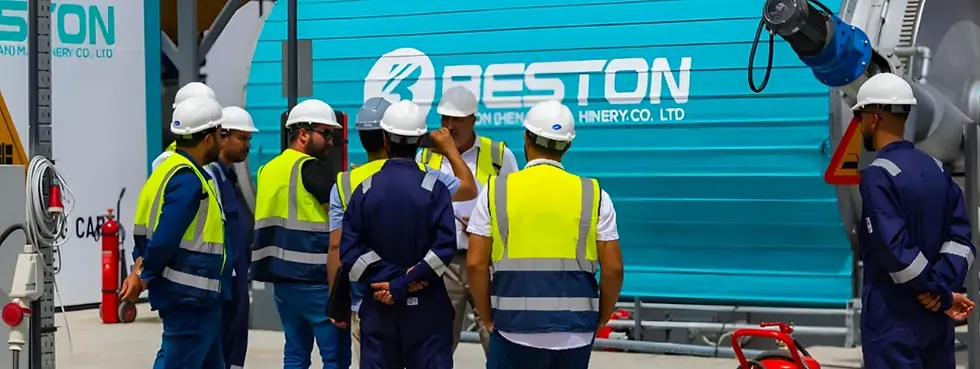Detailed Component Analysis of End-of-Life Tyres
- wastetoenergy
- Oct 17
- 3 min read
End-of-life tyres (ELTs) represent a growing environmental concern due to their volume, long lifespan, and difficulty in disposal. Composed of complex, heterogeneous materials, tyres consist of various components that serve different functions—ranging from strength enhancement to chemical resistance. Understanding the chemical and physical composition of ELTs is crucial for developing efficient recycling and treatment technologies, such as pyrolysis, that can extract valuable products while mitigating environmental impact.
Pyrolysis and Breakdown of Tyre Components
One of the most promising methods for recycling ELTs is pyrolysis machine, a thermochemical process that breaks down the complex structure of tyres at high temperatures in the absence of oxygen. During pyrolysis, the rubber matrix undergoes depolymerization, producing a mixture of oil, gas, and solid residue (char).
The pyrolysis process begins by breaking the long carbon chains of the polymer matrix into smaller molecules. The produced pyrolytic oil can be refined into fuels or chemicals, while the syngas can be used to fuel the pyrolysis plant itself, creating a self-sustaining process. The remaining char, often rich in carbon, can be used as a soil amendment or further processed into activated carbon.
However, the presence of reinforcing steel and textile fibres complicates the pyrolysis process. Steel can be recovered after pyrolysis by magnetic separation, but textile fibres typically burn off during the process, producing ash and gases. The presence of residual volatile organic compounds (VOCs) and heavy metals in the pyrolysis products also necessitates advanced filtration and gas scrubbing systems to meet environmental regulations.

Environmental and Resource Recovery Considerations
The chemical composition of ELTs is significant not only from a recycling perspective but also in terms of its environmental impact. The decomposition of tyres in landfills or through open burning releases harmful substances, such as dioxins, furans, and volatile organic compounds, into the air and soil. These pollutants pose risks to both human health and the environment.
Pyrolysis offers a controlled method for mitigating these risks by recovering valuable resources, including synthetic oils and gases, while minimizing the generation of harmful emissions. When implemented with proper emission control systems, tyre pyrolysis plant significantly reduces the environmental footprint of ELT disposal. Furthermore, the conversion of tyre material into useful by-products contributes to the circular economy by transforming waste into valuable secondary resources.
Rubber Matrix and Its Chemical Constituents
The primary component of any tyre is its rubber matrix, typically composed of natural and synthetic rubber. Natural rubber is derived from latex obtained from rubber trees, while synthetic rubber is primarily produced through the polymerization of petroleum-based monomers like styrene and butadiene. Together, these polymers form the bulk of the tyre’s structure, contributing to its flexibility and durability.
Within the rubber matrix, several additives are incorporated to enhance performance characteristics. These include antioxidants, plasticizers, accelerators, and curing agents (sulfur). The sulfur acts as a crosslinking agent, forming a three-dimensional network of polymer chains that provides the tyre with its characteristic elasticity and resistance to wear. This crosslinking, however, complicates traditional recycling methods, as the rubber becomes insoluble and resistant to simple reprocessing.
From a chemical standpoint, the rubber matrix consists primarily of hydrocarbon polymers, such as polybutadiene (PB) and styrene-butadiene rubber (SBR). These materials contain long, unbranched carbon chains, which, under extreme conditions, can undergo oxidative degradation, contributing to the generation of volatile compounds during thermal processing.
Reinforcing Agents: Steel and Textile Components
In addition to rubber, tyres contain reinforcing agents designed to provide structural integrity and enhance performance under load. Steel wire, typically in the form of mesh or bead wire, is embedded in the tyre to provide rigidity, strength, and resistance to deformation. Steel accounts for approximately 15–25% of a tyre’s total weight, depending on the type and application.
Textile materials, such as polyester, nylon, and rayon, are used in the tyre’s body ply layers, providing flexibility and enhancing overall strength. These fibres offer resistance to tearing and cracking, which prolongs the tyre’s operational life. The combination of steel and textile layers contributes to the tyre’s performance, but they present challenges during recycling, as they need to be separated from the rubber to enable effective resource recovery.
Volatile Compounds and Additives
Tyres are also composed of a variety of chemical additives, some of which remain volatile even after the tyre reaches the end of its life. These compounds are added to improve processing characteristics, control curing time, and prevent degradation. Among the most significant are plasticizers, which soften the rubber; accelerators, which speed up the vulcanization process; and stabilizers, which protect against UV damage and oxidative degradation.
Additionally, tyres often contain small amounts of aromatic oils and carbon black. Carbon black, a fine particulate material, is used primarily as a reinforcing filler in rubber, imparting enhanced strength and wear resistance. Aromatic oils serve as plasticizers and act as processing aids, contributing to the tyre’s durability and flexibility. These additives, while critical to the performance of the tyre, can pose environmental hazards when not properly managed during recycling.







Comments